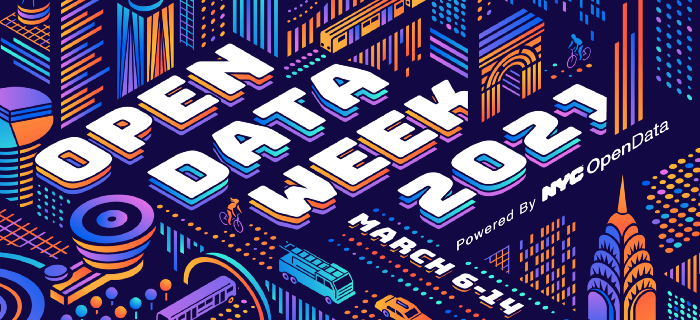Towards Better Governance of Urban Data: Concrete Examples of Success

by Naysan Saran
The original article can be read here
Since the Sumerians of the fourth millennium BCE, governments have kept records. These records have, of course, evolved from a few hundred cuneiform symbols engraved on clay tablets to terabytes of data hosted on cloud servers. However, their primary goal remains the same: to improve land management.
That being said, the six thousand years of civilization separating us from the Sumerians has seen the birth of democracy, and with that birth, a second goal has been grafted onto the first: cities must now earn the trust of their citizens with respect to how they manage those citizens’ data. This goal cannot be achieved without good data governance, which defines strategies for the efficient and transparent use and distribution of information.
To learn more about the state of the art in municipal data management, both internally and externally, we went to meet with two experts who agreed to share their experiences and best practices: François Robitaille, business architect for the city of Laval; and Adrienne Schmoeker, former Deputy Chief Analytics Officer for the City of New York, and Director at the New York City Mayor’s Office of Data Analytics where she managed the Open Data Program for three years.
Optimizing the Management of the City’s Internal Data: The Case of Laval

With more than twenty years of experience in data architecture design, geomatics, business intelligence and information quality control, François Robitaille is currently working on the migration of the data system of Quebec’s third-largest municipality to the Azure Cloud. This work is part of an effort led by the city of Laval to implement a data governance strategy based on best practices and new technological approaches
His recommendations are divided into three key areas:
- Establish data governance
- Map the life cycle of the data involved
- Establish sustainable contribution rules
Establish Data Governance
As soon as a municipality reaches a certain critical size, data management becomes a collective effort. For example, information relating to a water main can be modified by Geomatics, Engineering, and Public Works departments. At this point, the situation to be avoided at all costs is having duplicate databases in each department which evolve along divergent paths in parallel but differently, until all hope of reconciling them is lost.
To guarantee the coherence of data, which is essential to sound information management, the city must put in place a process designed to control, on the one hand, who can contribute to the data and, on the other hand, how they can contribute to the data.
“These are not just technological tools that we need at this level. The data cannot come from everywhere. We need to put in place business processes that are clear, with known entry points and standardized outputs. In Quebec, for example, several municipalities have collaborated on the Gocité project to set up a standardized data model that guarantees the integrity of their data through various applications.” — François Robitaille, Business Architect, Geomatics Solutions, Ville de Laval

Map the Life Cycle of the Data Involved
Next, it is important to realize that a piece of data is more alive than we may think. It is created, evolves, and then eventually dies, and this whole process – known as the data life cycle – needs to be well-understood. The diagram below illustrates, albeit in a simplified way, the life cycle of the data corresponding to a drinking water main..
“Additionally, it is not because the physical pipe ends up being destroyed that the data associated with it must be erased,” explains the business architect, “because it is very likely that, in a few years, you will be asked to justify a decision made by your department in the past. How are you going to do that if the information necessary to explain your decision no longer exists?”
Establish Sustainable Contribution Rules
Finally, we asked Mr. Robitaille to give us some concrete examples of situations to avoid, as well as the best practices to adopt in each case.
Eliminate Point-to-Point Data Architectures
Here, the typical situation that we need to avoid is, unfortunately, well-known: you start with a geomatics system like ArcGIS which is connected directly to the database of a business system. Soon after, another expert system connects to the first business system, and so on. You quickly find yourself in a “spaghetti” of connections that becomes unmanageable.
A better solution would be to build a shared, centralized data repository to which each department can contribute through a secure interface. The purpose of this interface is both to inform other business systems of any changes made to shared information, as well as to regulate access rights – hence the importance of having established data governance beforehand.
Create a Flexible Data Model Allowing for a Variety of Uses
Another pitfall to overcome: how to reconcile the operational needs of each department – which are, by definition, specific to each – and the need for uniformity for the city, which remains the owner of the data.
In this case, one of the preferred solutions is the establishment of steering committees, with participants from all departments, in order to agree on a model flexible enough to allow for use by several different business areas as well as distribution of data according to each individual’s needs (frequency, format, etc.).
Successful Open Data Management: The Example of New York City
To earn the trust of citizens, data governance must also consider what is shared with the public. At this level, one of the best examples comes from the United States.
In 2017, when Adrienne Schmoeker began her tenure as the Director of Civic Engagement and Strategy for the New York City Mayor’s Office of Data Analytics, the situation was far from optimal. Indeed, the organization regularly received complaints from users, and for good reason: these users had sent numerous requests for access to information — requests that very often went unanswered.
Two years later, the largest municipal open data program in the United States was born, with twenty-five hundred datasets published by one hundred city agencies and organizations. Better still, a law was passed concerning customer service which limited delays in response time for users to a maximum of two weeks. We interviewed Ms. Schmoeker to learn more about the keys to her success.
Do Not Neglect the Political Dimension
“Today, when you send a request to the New York City Open Data service, the city agency has to do an audit and search through their dataset to assess if the data that you are asking for is available,” explains the Open Data expert.
However, this extraordinary result would not have been possible without the involvement of elected officials: “You should know that in 2012, the City of New York passed a law stipulating that all data should be made public by December 2017. Without this law, the Open Data program would not be where it is today. ”
Indeed, the adoption of this kind of regulation is instrumental in making things happen, as municipal employees are often very busy. “When someone receives an email from the city’s executive office with the subject line, ‘You are out of compliance’, you are much more likely to get their attention than if the email was titled, ‘Local nonprofit needs your data.’ ”
Unfortunately, passing laws that make data sharing mandatory remains very delicate and is primarily a matter of political strategy. As a matter of fact, the Open Data Law of 2012 was passed at the end of the Bloomberg administration … It is much easier, indeed, to vote for a decree if it is the next administration that will be in charge of putting it in place.
Address the Issue of Data Privacy
Next, it is clear that some datasets are more sensitive than others. As Carol L. Stimmel writes in Building Smart Cities, your digital platform might just be another man’s privacy nightmare. For example, in New York City, some departments have been reluctant to release their data for security reasons. “The causes of this kind of resistance are sometimes legitimate,” explains Ms. Schmoeker, “which is why you must take the time to identify, with each service, the real risks that could arise from sharing their information, and make an enlightened decision as a result.”
Manage Your Data Like You Manage Your Assets
One of the key aspects of the 2012 law concerns data governance: each year, the City of New York must now publish a report on the available data, and designate an open data coordinator within each municipal agency. These “local champions” will be key in your open data strategy.
“Once you have your roster of champions within each department, your task becomes much more efficient. Communicate with these coordinators beyond annual reports. Survey them, ask them what their pain points are, what training they wish they had, etc. Arrange meet-ups to make them feel that they are part of something bigger, get them to see that there is a community of people that are excited that they are doing this and for whom their work has a real impact.” — Adrienne Schmoeker, former Deputy Chief Analytics Officer for the City of New York, Advisor at Urban AI, Senior Fellow at the GovLab at NYU Tandon and City Engagement Strategist & Advisor for Helpful Places, stewards of the DTPR Standard
Where to Start?
Ultimately, the challenge of open data is akin to finding a balance between supply and demand. To know where to start to achieve that balance, Schmoeker advises identifying priorities by answering the following questions:
- Internally: Which datasets are easiest to publish?
- Externally: Which non-governmental organizations need this data?
“Gather data based on demand, and then use that information strategically to apply the pressure to release the data. Find ways to engage the community: organize citizens’ assemblies, data literacy workshops, etc. Think about what kind of information people would like to have. “
In Conclusion
In 2014, Michael Bloomberg wrote: “There is no better way to improve the lives of billions of people around the world than to improve the way cities work.” And for good reason: for the first time in human history, the majority of the world’s people live in cities; by 2050, three out of four human beings will be city-dwellers.
The old way of managing data – through departments working in silos and jealously protecting their information – is coming to an end because it no longer meets the needs of citizens. To replace it, our two experts are on the same page: it will be necessary to rely not only on suitable technological tools, but also on data governance that involves all stakeholders, both inside and outside the city hall.
Leveraging artificial intelligence and machine learning to help protect the world’s most valuable resource: Water.
© 2020 CANN Forecast Software Inc.
FOLLOW US

